
Editor’s Note: This is one of a series of blogs by David Goodyear describing the construction of his new home in Flatrock, Newfoundland, the first in the province built to the Passive House standard. The first installment of the GBA blog series was titled An Introduction to the Flatrock Passive House. His most recent post was Taking a Tour. You’ll find his complete blog here.
This year, summer got off to a bad start. June was cold, with an average temperature of around 7°C (44.6°F), accompanied by a lot of cloud cover and drizzle. I have realized over the past 10 years that outdoor living in Newfoundland is really limited. Summer is short and you really don’t have a whole lot of time to enjoy it.
For this reason, I planned on using the outdoor space quite differently than at my previous property. I also wanted to make sure that my time in the garden had some payback. I decided that a good place to invest my time and effort would be a landscape that offers some food security. As well, I wanted a low-maintenance landscape that grows well in our environment, and is resilient to drought and pests.
My plan for landscaping was quite simple really: Go back 50 years and do what most Newfoundland families did. They grew root vegetables. Good cold-climate varieties that are tuned to our short growing season are easily accessible, and they can be stored for long periods of time under the right conditions.
With the right plantings, you can get multiple crops out of the same plants. With this in mind, we decided to grow onions (160 plants), turnips (120), carrots (300), beets (100), cabbage (20), parsnips (100), and lettuce (who knows!). We also planted some herbs that lend themselves well to drying for winter use. Potatoes are a staple here, and luckily they are dead easy to grow. Our vegetable garden takes up the whole back yard!
Winter storage
With all the vegetables and about 180 potato plants, creating long-term storage was a necessity.
I designed and built an underground cellar which sits in a slope on the east side yard. It is basically a concrete bunker with a structural slab sitting on the top. The whole thing was tarred on the outside and a pond liner was draped over the top to help shed water. I installed some leftover 4-inch EPS foam insulation on the top of the slab because I wasn’t sure I would be able to backfill the cellar with enough soil to ward off frigid winter temperatures and the heat of summer.
The thermal properties of various soil types is pretty complicated. This being said, there appears to be a consensus that the R-value varies between 0.1 to 0.25 per inch. Adding 4 inches of foam is equivalent to adding many feet of earth. It doesn’t add thermal mass, but it is much easier on your back than shoveling a couple of loads of topsoil! We added about 2 feet of earth on top of the cellar and I plan on seeding it with grass sometime soon. I still have to build some shelving but there should be no problems having this ready for winter.
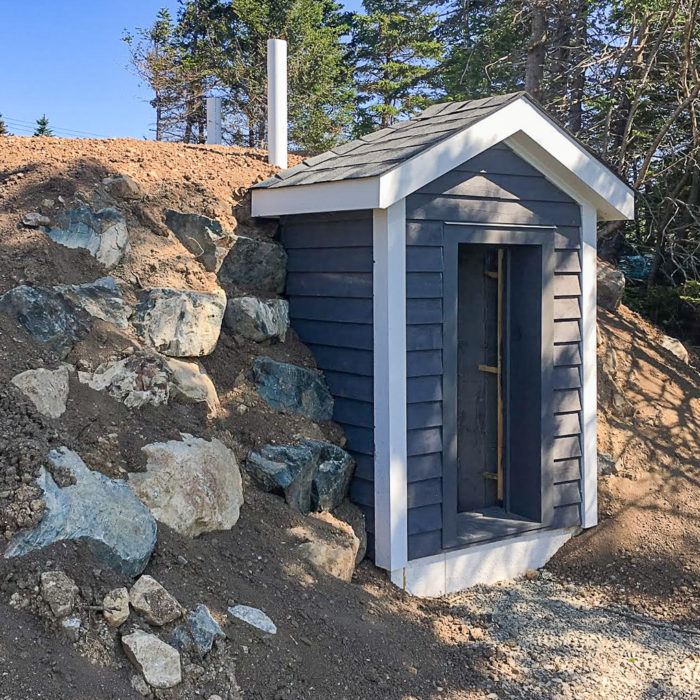
During April and May, I finished several larger projects: I added a small deck for the back entrance and a veranda under the front overhang. The driveway is now paved and the front yard is now being landscaped. I am hoping to seed this week with timothy grass, white clover, and red clover. Things are shaping up nicely.
Summer comfort and energy use
As for energy use, our usage for the month of June 11- July 11 was 651 kWh. Given that the average June temperature was 7°C, I felt that this was fairly respectable. The heating system ran about two days altogether. With the heating season over, I can safely assume that this is approximately the baseload of the building.
I have installed a Nyle Geyser air-to-water heat pump that helps with some cooling and dehumidification while maintaining the temperature of the Logix24 boiler tank for hot water use. The unit pulls warm air from the living room, into the heat pump, and pushes cool air upstairs. The cold coils capture some latent heat and the condensed moisture is drained into a floor drain. In short, the Gyle captures heat from the air in the house and cools it in order to heat the hot water for the tank.
Overall, the house temperature has been fairly constant. There have been a few days when the outside humidity has been so high that it led to increased humidity inside the house. I had the ERV set on continuous ventilation and didn’t realize it. This was a huge mistake. This made the building very stuffy because of all the humidity, although the interior temperature has been fairly constant.
At one point, the temperature inside the house was about 23.5°C (74.3°F), which is well under what Passive House considers an overheating event …. however, the humidity has varied quite a bit. Humidity as high as 80% has led to apparent temperatures of about 29°C (84.2°F) or higher!
Humidity plays a huge role in comfort. So I have been playing with nighttime flushing by opening windows during the night and closing them in the morning. That has been somewhat effective. Even though I don’t mind opening and closing windows, I can see how it wouldn’t be convenient for most people.
There was a bit of a learning curve to determine how much to open our windows. Our location is so windy that the wind can blow the screens out of the windows! It would be nice if the night purge was more automated. I find myself looking more at the weather forecast so I can time opening the windows with cool temperatures and low humidity, only to wake up and find it has rained and the air coming in the house is at 95%+ humidity.
The smart mode on the ERV tries to save energy by limiting ventilation when the temperature outside gets too hot. During this time it recirculates air throughout the house. I have found that having the recirculate mode set to 100% of the motor capacity helps with moving some cool air around.
Some HRVs have the ability to bypass the core to cool the home when exterior air is cooler. My ERV does not. This is one feature that I wish our unit had. However, ventilation CFMs are usually not high enough to cover the cooling loads required, so the extra money spent on the fancy ERV with bypass may not have worked out anyways. For now. I’ll stick to opening the windows!
Building a window shade
Earlier in the summer, my first project was adding a shade structure to several windows on the main level. The WUFI model showed some overheating in the middle of summer without the structure in place. Before we installed the clapboard siding, I had attached vertical ledgers (I call it a vertical ledger board) so I could secure braces that would be used to attach the shade structure (see the first image in the gallery).
My design uses a set of 90° brackets secured to the vertical ledgers. Rather than 2×6 slats specified in the original drawings, I decided to use 2x3s. The shading provided when the sun sits lower in the sky would be different, but with some investigation on paper, I determined that one could space the 2×3 closer together in order to get a similar effective shading.
I built the brackets in my workshop and stained them white to match the trim on the house. I lifted the brackets in place from a ladder and secured them to the house. I leveled the two at the ends and attached a string line between them. The two in the middle were lifted up in place until they just touched the line and then they were secured.
Each bracket is secured with a six 8″ x 3/8″ lag screws. Once the brackets were installed, I measured and cut all the components, i.e. 2×6 joists and 2×3 slats. I stained all the parts in my workshop. The structure went up once piece at a time. The main joists were lifted in place from a ladder. They were then secured with #10 5-inch plated screws. Laying out the slats was first done on paper. As I added slats, I checked the remaining distance and made small adjustments to spacing so there would be slats at either end (see Images #2 and #3 in the gallery).
The shade structure definitely makes a difference to the solar irradiance inside the house. I estimate that the shadow it casts is at least 40% of the total illuminated area. I have noticed as we moved into June that the main level doesn’t heat up as quickly as it did a month before. June has been cold so the solar gains would have been nice, but the model uses average climatic data, so performance is based on an average rather than a specific weather pattern for the given year.
The most difficult part of the installation was moving the heavy ladder around. The job was fairly time-consuming, mainly because of the number of times I had to climb up and down the ladder. That being said, the exercise really warmed me up on those cold days of May.
Weekly Newsletter
Get building science and energy efficiency advice, plus special offers, in your inbox.





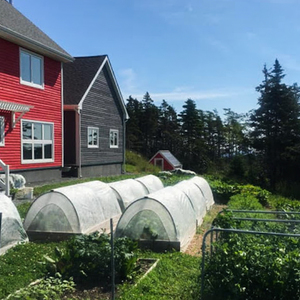
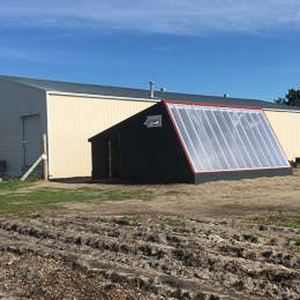
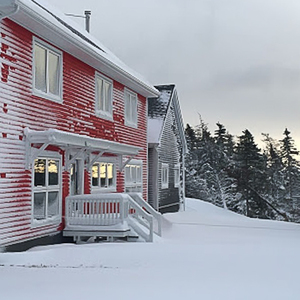
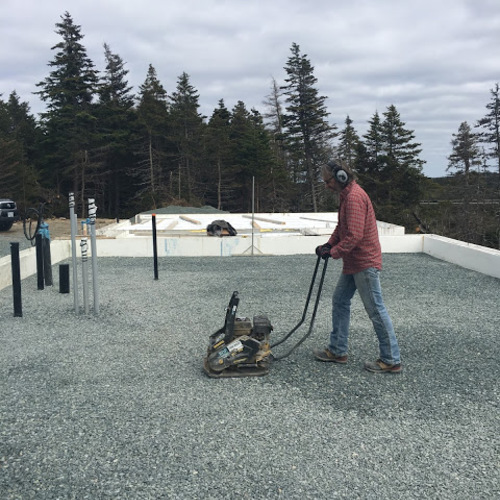






16 Comments
Is the 651kWh a typo? That seems high for a base load for a house of this performance level.
I don't think 651kWh is high, assuming it's inclusive of all loads. We've been consuming in the ballpark of 400kWh in our house this summer. That is with ZERO heating, ZERO cooling (not even a fan), no stove or oven for cooking. Just domestic hot water, some LED lights, bar fridge, microwave, personal electronics/internet. The satellite modem and router alone is about a 40kWh per month hit. The water heater on standby is another 40kWh. It adds up pretty quickly.
21.7kWh/day isn't astronomical or anything, it just seemed a little out of place on such a high performance home.
I didn't do a good job of making my point, perhaps because the terminology (base load) is not being used consistently. What David is describing is the behaviour based load, that is the load that exists when no energy is needed to hear or cool the home. As such, it not does not in any way reflect the performance of the house. While it might make more sense to call the minimum load to heat and cool the base load, and the rest of the elective load, in practice you can't measure the former as long as you're living in the house.
You're right, I was conflating a high performance building with energy efficiency overall.
The relationship between the two is an interesting topic. If plug loads are going to dominate energy use, at what point do you stop worrying about reducing heating and cooling needs?
Malcom, it is interesting. I guess all you can do is minimize heating and cooling needs and let the rest go but choose energy efficient lights, fixtures, and appliances and maybe try to be aware of the plug loads that contribute to high phantom draw. I have measured several of these, like my computer (which I always turn off), my television, cable recievers and router and the draw is fairly small. For example my reciever draws about 12 W (from what I recall). This will add about 9 kwh (about $1) to my monthly bill. Will I worry about it? probably not. I know that people are adding "smart home" features and energy monitoring hardware so they can turn stuff on and off but my feeling is that once the novelty wears off, it will be ignored and you just have another system to maintain and is using power ontop of those phantom loads. Carl Seville described his experience in a recent post here https://www.greenbuildingadvisor.com/article/new-house-year-one-update. I figure that a "dumb" energy efficient home is better than a "smart" energy inefficient home any day. At this point we use our house. I am conscious of turning off lights and pulling chargers, but I don't sweat the small stuff.
David,
Maybe this is where predictive software could be quite useful? If you know what your plug-loads will be, and that they are stubborn and not amenable to being reduced, then you can play with insulation levels to see when it makes sense to stop adding more.
Of course there are lots of other benefits from very high levels of insulation. Comfort and resiliency probably being the big ones.
To get back to your blog: I'd love to see that root-cellar once the plantings take over the roof. If you remember next summer, please post a picture.
Malcom, I will definitely be updating the blog regularly over the next year. Here is the state of the root cellar now. The door is installed, vents installed and grass is growing!
You're right, I was conflating a high performance building with energy efficiency overall.
Hi, for some reason I wasn’t seeing these messages. So we had a couple of heating days in June and I was using electricity to heat the logix boiler for the heating system. During the summer (July). I installed a nyle geyser heat pump. Energy use dropped to about 450kwh. According to Newfoundland power I used about 1/3 of the energy that most homes used in my area and about 1/2 of that of an energy efficient. My feeling is that the house is performing well. So far I have used less than 27% of the energy I used in my previous house of the same size. The only real issue has been humidity. Temperatures haven’t went above 24c which is within the definition for overheating according to Phius. However, due to the air tightness, humidity has been a problem which is being addressed.
Hi David.
I likely should have started my first post by saying I applaud your efforts with your house and pioneering such an ambitious project in an area where it hasn't been done before. I'm not, in any way, trying to say you haven't done enough. My initial question wasn't a back handed way of calling you out, I was honestly just curious if it was a typo.
You wrote,
"Malcom, it is interesting. I guess all you can do is minimize heating and cooling needs and let the rest go but choose energy efficient lights, fixtures, and appliances and maybe try to be aware of the plug loads that contribute to high phantom draw. I have measured several of these, like my computer (which I always turn off), my television, cable recievers and router and the draw is fairly small. For example my reciever draws about 12 W (from what I recall). This will add about 9 kwh (about $1) to my monthly bill. Will I worry about it? probably not. I know that people are adding "smart home" features and energy monitoring hardware so they can turn stuff on and off but my feeling is that once the novelty wears off, it will be ignored and you just have another system to maintain and is using power ontop of those phantom loads. Carl Seville described his experience in a recent post here https://www.greenbuildingadvisor.com/article/new-house-year-one-update. I figure that a "dumb" energy efficient home is better than a "smart" energy inefficient home any day. At this point we use our house. I am conscious of turning off lights and pulling chargers, but I don't sweat the small stuff."
Something to think about, just 114W of standby power loads (continuous power loads) is 1000kWh/year. In your area, that's likely 4-5 solar panels, to put it in those terms. It really does add up. I measured everything in my house that's plugged into typical wall outlet. I was surprised several times. For example, my microwave was using about 30W, my cable boxes were using close to 30W as well. My door bell I didn't measure, but the transformer was always hot to the touch. On the other end of the spectrum was my phone chargers. I couldn't even get a reading when they weren't charging.
For various reasons I canceled cable. I disconnected my door bell, the only people that ever rang it were the kids when they were "playing" and solicitors. My microwave now has a switch in the side of the case. I have an automatically switching powerbar for my entertainment setup (not something you'd want to use if you're tied to a personal video recorder cable box). I found a simple setting in my Wii that changed it from standby to off. (that was before the powerbar purchase) I even setup schedules in my personal computers that shut them off after 30 minutes of inactivity if we forget to. I made some hopefully fairly accurate assumptions about ducting losses in my HRV, cleaned up some of the runs (I pulled 19 of those twisty bends out of the system) and reduced the ventilation rate to the minimum... If you're interest in taking the time to do the measurements and looking for ways to reduce what's glaring you MIGHT be surprised. Overall, if I remember correctly, I've reduced our standby loads by about 200W mostly continuously.
I may have gone too far when I bought a new adapter for my alarm that is up to the latest energy saving specs only to find it only saved about 2W, though.
Edit, that 200W is what I measured as well as a few reasonable assumptions. Things like the door bell I think I assumed was around 10W. Insulating my water heater I estimated around 40W, etc. But where was a few things I did before I bought the meter that I don't know how to estimate. My old stereo receiver made in 1983 that sits in my workshop for example. I have no idea what it's standby usage was so I didn't include it in my 200W estimate.
A door bell (the old, transformer kind) consumes 1-2W. A wireless one you plug into the wall might be more. The batteries in a wireless one probably make it the least green option, and the most expensive to operate.
I tried hooking up my internet suite (40W 24/7 draw) to a timed power bar. That lasted about a week before my wife just moved the plugs to the non-switched side of the bar.
Trevor,
You may unwittingly be involved in a polygamous marriage, as you seem to be describing my wife too.
Hi Calum,
I understand that you weren't calling me out. No biggie, figured Id offer an explanation of the numbers. THis all being said, I will probably revisit the plug/light load things. My plan is to write a 1 year update outlining our power usage as well as issues, solutions etc. For now, I will be keeping the garden going and prepping for the long hard winter ahead! heating season starts in october....well maybe not for me!
I look forward to your next submission. Thanks for sharing your knowledge and experience.
Log in or create an account to post a comment.
Sign up Log in